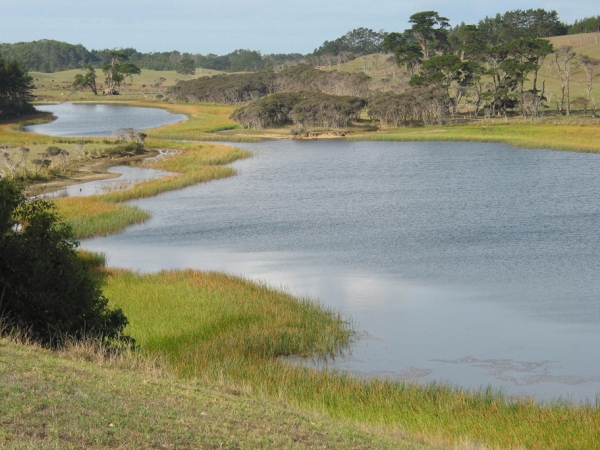Early detection leads to successful lake-wide eradication of a freshwater pest plant, highlighting the value of long-term research with Northland Regional Council.
Northland Regional Council (NRC) has a programme of lake monitoring for around 90 lakes. NIWA was instrumental in the instigation of this programme and have been contracted by NRC for the past 14 years to carry out a week-long survey annually. The survey includes evaluation of ecological value (including endangered species) and the threats to each lake, with recommendations for management to remedy these issues.
The invasive weed Lagarosiphon major was discovered in Lake Ngakapua, in the Sweetwater lakes north of Kaitaia, during a survey in April 2014. Lake Ngakapua is ranked as one of the best condition lakes in Northland. An intensive search was carried out to determine the extent of this weed in the lake and, following that, NIWA provided an incursion response plan that included the use of a very selective herbicide (endothall). NIWA were instrumental in making this product available in New Zealand, with research into its effectiveness (Hofstra et al. 2001), and preparation of the application to register this product in New Zealand, along with supporting evidence presented at the hearing.
Previous successful eradications against large infestations of Lagarosiphon major were obtained at sites in Southland and in another Northland lake (Wells et al. 2014). However, in the case of Lake Ngakapua there were mostly only individual shoots of the weed in around 1/3 of the lake perimeter, with a single bed of around 10 m2 between two main basins within the lake. After a year, all permissions required to use this herbicide had been obtained by NRC and treatment occurred in April 2015. One month later, no living shoots of lagarosiphon were found, whereas all other lake biota appeared to be unimpacted. Annual surveys have failed to detect this plant since and the final visit was made in April this year. Again, no lagarosiphon was found and the site has been declared eradicated by NRC.
This successful incursion response shows the importance of regular surveillance and development of eradication tools once a new incursion is detected.
Further information
Hofstra, D.E., Clayton, J.S. and Getsinger, K.D. (2001). Evaluation of selected herbicides for the control of exotic submerged weeds in New Zealand: II. The effects of turbidity on diquat and endothall efficacy. Journal of Aquatic Plant Management: 39, 25-7.
Wells, R., Champion, P., Clayton, J. (2014). Potential for lake restoration using the aquatic herbicide endothall. Proceedings, Nineteenth Australasian Weeds Conference: 143-146.


